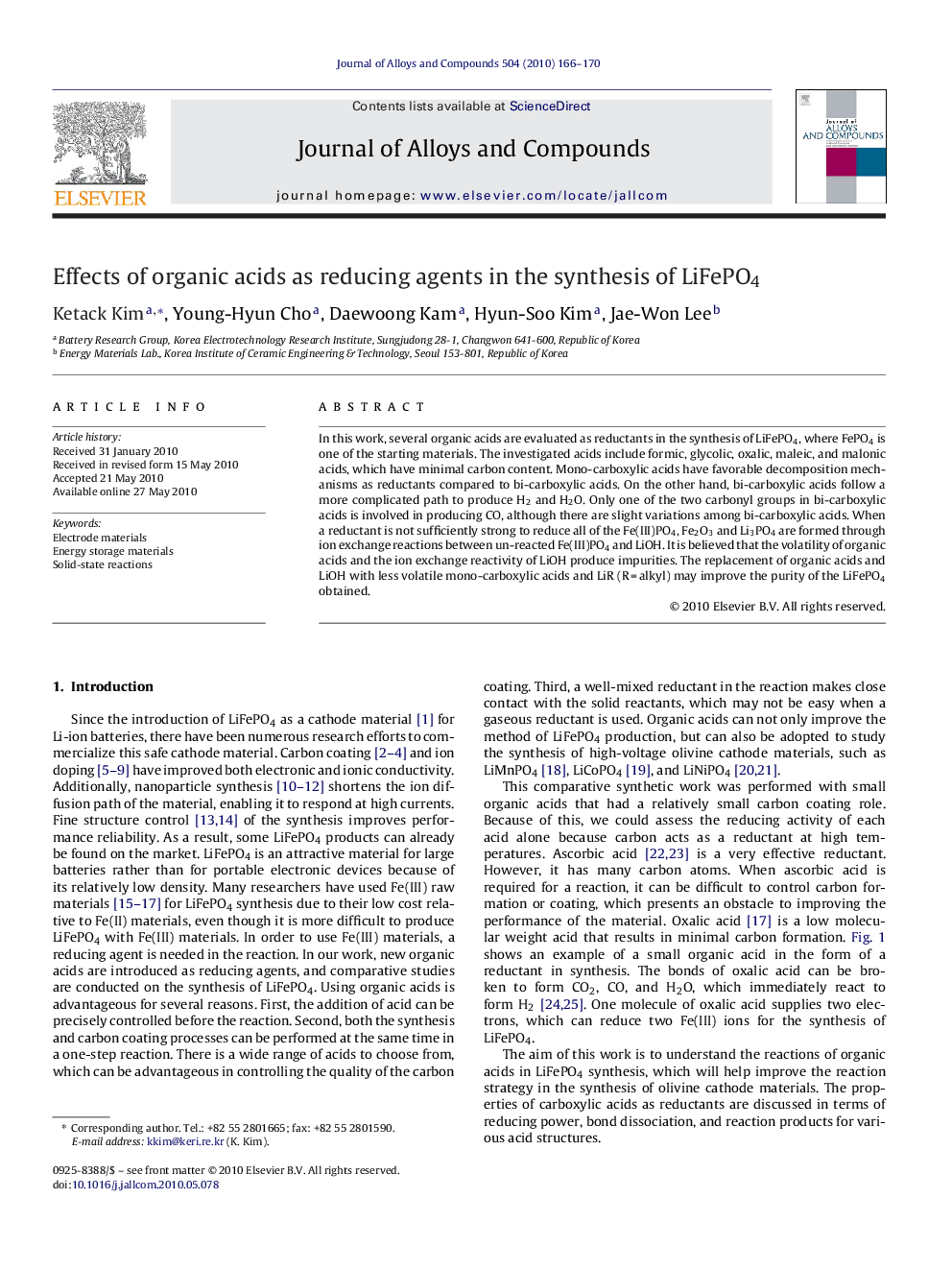| Article ID | Journal | Published Year | Pages | File Type |
|---|---|---|---|---|
| 1618169 | Journal of Alloys and Compounds | 2010 | 5 Pages |
In this work, several organic acids are evaluated as reductants in the synthesis of LiFePO4, where FePO4 is one of the starting materials. The investigated acids include formic, glycolic, oxalic, maleic, and malonic acids, which have minimal carbon content. Mono-carboxylic acids have favorable decomposition mechanisms as reductants compared to bi-carboxylic acids. On the other hand, bi-carboxylic acids follow a more complicated path to produce H2 and H2O. Only one of the two carbonyl groups in bi-carboxylic acids is involved in producing CO, although there are slight variations among bi-carboxylic acids. When a reductant is not sufficiently strong to reduce all of the Fe(III)PO4, Fe2O3 and Li3PO4 are formed through ion exchange reactions between un-reacted Fe(III)PO4 and LiOH. It is believed that the volatility of organic acids and the ion exchange reactivity of LiOH produce impurities. The replacement of organic acids and LiOH with less volatile mono-carboxylic acids and LiR (R = alkyl) may improve the purity of the LiFePO4 obtained.
